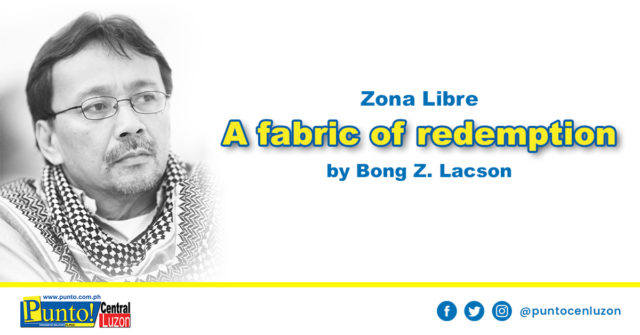FASHION FORECASTS make as much a part of the raucous celebrations into the new year as fireworks and feng shui in a world turning more and more materialistic through the passage of time.
Invariably, 2019 comes as more of the usual. After the flashy explosions, the crystal balls, and tea leaves, awash we are now in the trending threads, cuts, colors, and styles that will dominate the next 12 months.
Clothes make the man – the woman, and the LGBTQ too, if only to be gender-considerate. So long proclaimed and still proclaims the gospel of GQ, so long read and still reads the epistle of Esquire of the dogma of the fashionista that worships at the altar of haute couture, replete with its own slew of prophets, if not its calendar of saints, in Louis Vuitton and Balenciaga, Hermes and Prada, Chanel and Gucci, Versace and Armani. Can’t afford the brands? What’s Divisoria for?
Is it then sacrilege, indeed, blasphemy to take this frivolity, aye, vanity, to the realm of theology?
I fear not, sensed as I have and still do the extraordinary in the ordinary; felt and still do feel the supernatural in the natural. Indeed, found and still find spirituality in sheer secularity. All within the exercise of my Catholic faith.
Hence, a dream most vivid, fl owing into a reflection not so deep on clothes – not so much in the context of worldly fashion but in the divine act of human redemption. Triggered no doubt by the gospel of Epiphany Sunday.
Fabric – as cloth, as garment – I happened to read as some allegory of the fabric – in its meaning as “underlying structure” or “framework” – of redemption.
At the very birth of Christ, Luke 2:7, thus: And she brought forth her firstborn son, and wrapped him in swaddling clothes, and laid him in a manger; because there was no room for them in the inn. Luke 2:7.
In His ministry, Matthew 9:20-22, thus: Suddenly a woman who had suffered from bleeding for twelve years came up behind Him and touched the fringe of His garment. She said to herself, ‘If only I touch His garment, I will be healed.’ Jesus turned and saw her. “Take courage, daughter,” He said, “your faith has healed you.” And the woman was cured from that very hour.…
At the Transfiguration, Matthew 17:2-3, thus: There he was transfigured before them. His face shone like the sun, and his clothes became as white as the light. Just then there appeared before them Moses and Elijah, talking with Jesus.
At His crucifixion, Matthew 27:35, thus: And they crucified him, and parted his garments, casting lots: that it might be fulfilled which was spoken by the prophet, “They parted my garments among them, and upon my vesture did they cast lots.”
At His resurrection, John 20:6-7, thus: Then Simon Peter came along behind him and went straight into the tomb. He saw the strips of linen lying there, 7 as well as the cloth that had been wrapped around Jesus’ head. The cloth was still lying in its place, separate from the linen.
Birth. Ministry. Death. Resurrection. The drama, aye, the Truth, of His redemptive act, all-too apparent here. The inseparability, aye, the indivisibility of the human-and-divine nature of Christ verily manifest here too.
The Niño incarnate of the Virgin Mary, sharing in all our humanity – except in sin.
His mission of salvation, with miracles but punctuations of His divinity, affirmed at His baptism by John, in Matthew 3:17, thus: And a voice from heaven said, “This is my Son, whom I love; with him I am well pleased” and reaffirmed at Mount Tabor, in Matthew 17:5, thus: While he was still speaking, a bright cloud covered them, and a voice from the cloud said, “This is my Son, whom I love; with him I am well pleased. Listen to him!”
Stripped of His garments, hanging to die at the cross, as much the ultimate humiliation of His humanity as the supreme purification leading to the glory of His resurrection.
Behold, His humanity in the swaddling clothes at his birth. Behold, His divinity off the burial linen at the empty tomb. Dominus meus et Deus meus. My Lord and my God.
Sans any formal schooling in theology, absent neither pretention to spiritual enlightenment nor any affliction of delusion, with nothing more and nothing less than the simplicity of my Catholic praxis, there unfolded before me the fabric of Christian redemption.
“For the apparel doth oft proclaim the man.” So Shakespeare wrote in Hamlet. Finding a deeper sense of spirituality in the purely literary. Grace, it can only be. A blessed year, 2019 promises to be.




